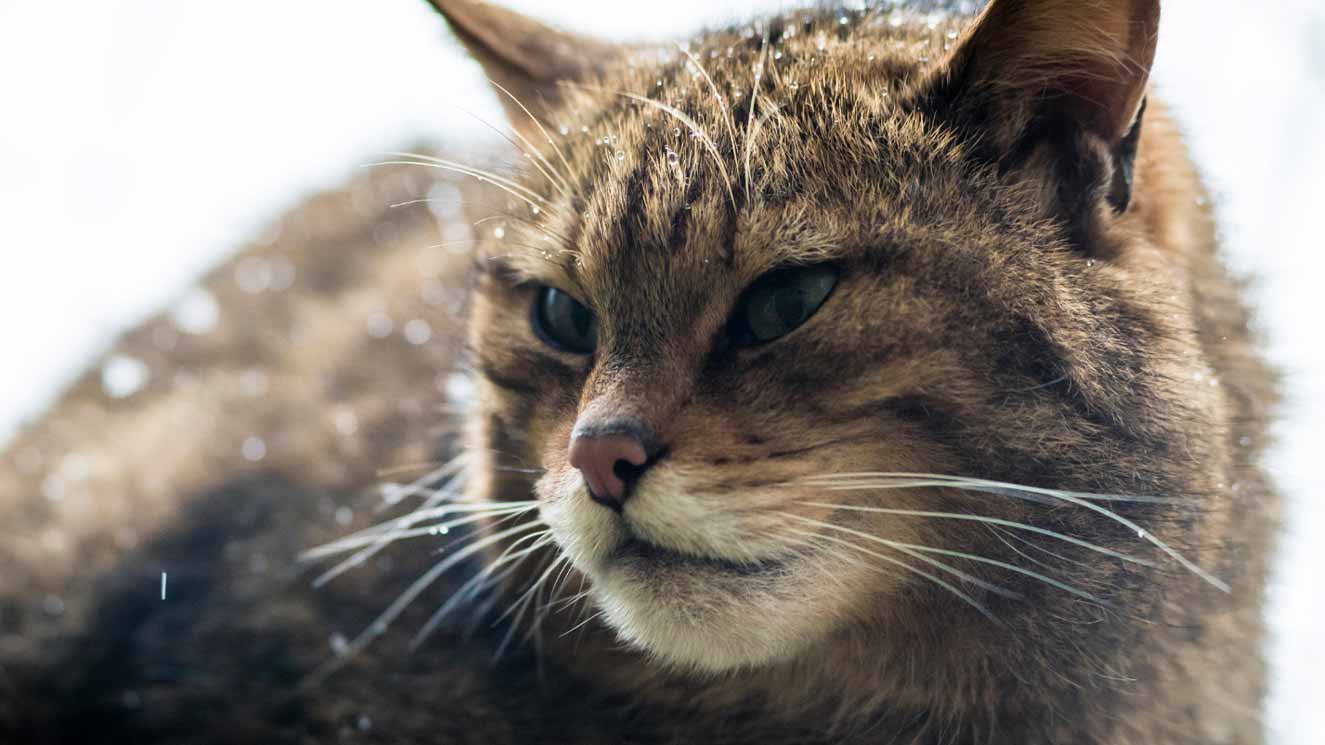When you visit the Scottish Highlands, it’s almost impossible not to notice wildcats. They’re represented on many buildings and gates, several clans have mottos referencing the cats’ defiant nature, some whisky distilleries also have wildcats in their imagery or in the stories about how the distillery first started. There’s even art installations with life-size painted wildcats dotted around, and some towns have them in their coats of arms or on their street signage.
Scottish wildcats are, like most wild cat species, incredibly elusive and very difficult to see in the wild. Unfortunately, they are also extremely rare – which means that if you are lucky enough to spot one, it’s all the more special.
Scotland certainly has the most clear connection to these animals, but they were once found throughout mainland Britain. It’s thought that wildcats inspired tales of the Cheshire Cat – including the most famous one from Alice in Wonderland – as well as traditional folk tales of witch’s cats and ethereal felines. If you ever see one up close, you’ll understand why.
Wildcats use forests as their home; they build dens within the dense undergrowth and have been observed patrolling areas several square kilometres in size. Their beautiful green eyes and striped fur perfectly camouflages them in forests and tall grasses, lending them the nickname Highland Tigers. They’re bigger than your average moggy by about 25-30% – and are infinitely more fierce too!
In years past, these captivating creatures have been seen as pests – and as a result, we humans have pushed them to the very brink of extinction. Yet there are ongoing efforts to preserve the species and even reintroduce it back into suitable habitats.
One of the most pressing dangers for this species comes from humans’ love of pet cats. While wildcats are a distinctly different species to domestic cats, they can interbreed with them. This dilutes their genes and important characteristics are lost – for example, wildcats have roughly 10,000 hairs per square centimetre to protect them against harsh winters, compared to domestic cats only having around 4,000. Domestic cats can also pass diseases across to wildcats, some of which are fatal. Statistics suggest there’s as many as 4,000 feral domestic cats in Scotland alone, compared to less than 100 wildcats.
One of the simplest and most effective forms of conservation is for cat owners to neuter and vaccinate their cats. Members of the public can also report feral or stray cats to charities such as Saving Wildcats or Cat’s Protection, so that these animals can also be neutered and vaccinated. Keeping our pet and stray cat population healthy and neutered gives the few wildcats remaining in the wild the best chance of survival – and plans to reintroduce wildcats bred in captivity will boost their population levels in an effort to bring them back from the brink.
Working in conjunction with those who successfully reintroduced Iberian Lynx to Spain and Portugal, conservationists are currently hard at work identifying suitable habitats across Scotland to reintroduce wildcats into. If all goes well, reintroductions could begin within the next couple of years.
Perhaps, one day in the not too distant future, wildcats will call one of the forests managed by The Future Forest Company home.
Thanks to Leanne Gater, Head of Production at Wild Films for sharing about Scottish Wildcats. To learn more, watch The Tigers of Scotland https://www.wildfilms.co.uk/tigers-of-scotland/




